 by our College Data Analytics Team
by our College Data Analytics TeamATU total enrollment is approximately 10,829 students. 6,227 are undergraduates and 135 are graduate students.
Male/Female Breakdown of Undergraduates
The full-time ATU undergraduate population is made up of 55% women, and 45% men.
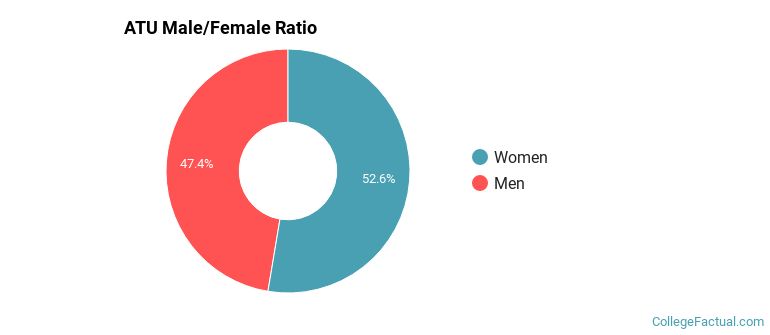
For the gender breakdown for all students, go here.
ATU Racial/Ethnic Breakdown of Undergraduates

| Race/Ethnicity | Number |
|---|---|
| White | 4,634 |
| Hispanic | 537 |
| Black or African American | 433 |
| Multi-Ethnic | 306 |
| International | 171 |
| Asian | 100 |
| Native Hawaiian or Pacific Islander | 5 |
| Unknown | 0 |
See racial/ethnic breakdown for all students.
Male/Female Breakdown of Graduate Students
About 51% of full-time grad students are women, and 49% men.

For the gender breakdown for all students, go here.
ATU Racial-Ethnic Breakdown of Graduate Students
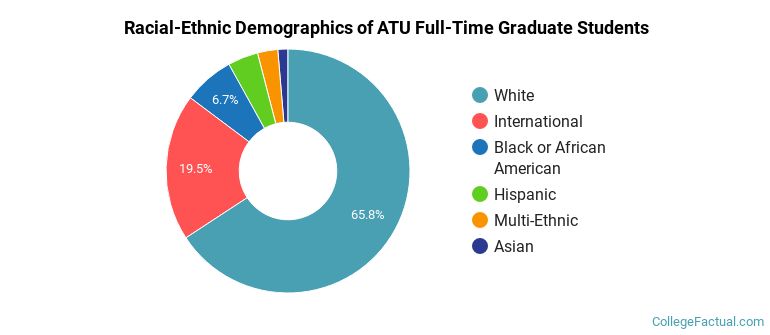
| Race/Ethnicity | Number |
|---|---|
| White | 89 |
| International | 23 |
| Black or African American | 13 |
| Hispanic | 7 |
| Multi-Ethnic | 2 |
| Asian | 1 |
| Native Hawaiian or Pacific Islander | 0 |
| Unknown | 0 |
See racial/ethnic breakdown for all students.
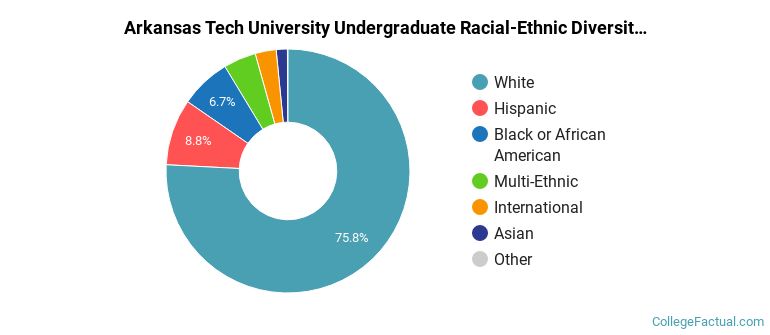
| Race/Ethnicity | Number |
|---|---|
| White | 8,184 |
| Hispanic | 992 |
| Black or African American | 697 |
| Multi-Ethnic | 473 |
| International | 241 |
| Asian | 161 |
| Native Hawaiian or Pacific Islander | 8 |
| Unknown | 0 |
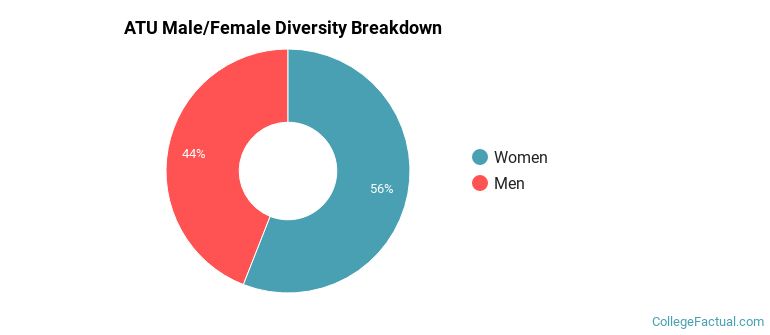
There are approximately 6,183 female students and 4,646 male students at ATU.
ATU ranks 1,685 out of 2,183 when it comes to geographic diversity.
4.2% of ATU students come from out of state, and 1.8% come from out of the country.

The undergraduate student body is split among 11 states (may include Washington D.C.). Click on the map for more detail.

| State | Amount |
|---|---|
| Arkansas | 1,780 |
| Texas | 41 |
| Oklahoma | 16 |
| Louisiana | 5 |
| Alabama | 3 |
Students from 47 countries are represented at this school, with the majority of the international students coming from Saudi Arabia, China, and India.
Learn more about international students at ATU.
A traditional college student is defined as being between the ages of 18-21. At ATU, 44.28% of students fall into that category, compared to the national average of 60%.
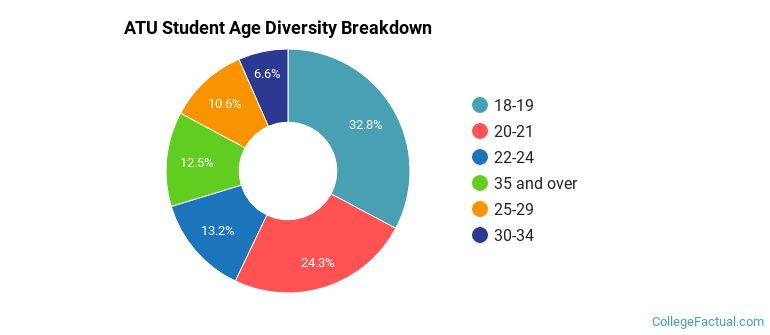
| Student Age Group | Amount |
|---|---|
| 18-19 | 3,007 |
| 20-21 | 2,231 |
| 22-24 | 1,210 |
| 35 and over | 1,151 |
| 25-29 | 969 |
| 30-34 | 605 |
| Under 18 | 0 |
Footnotes
*The racial-ethnic minorities count is calculated by taking the total number of students and subtracting white students, international students, and students whose race/ethnicity was unknown. This number is then divided by the total number of students at the school to obtain the racial-ethnic minorities percentage.
References